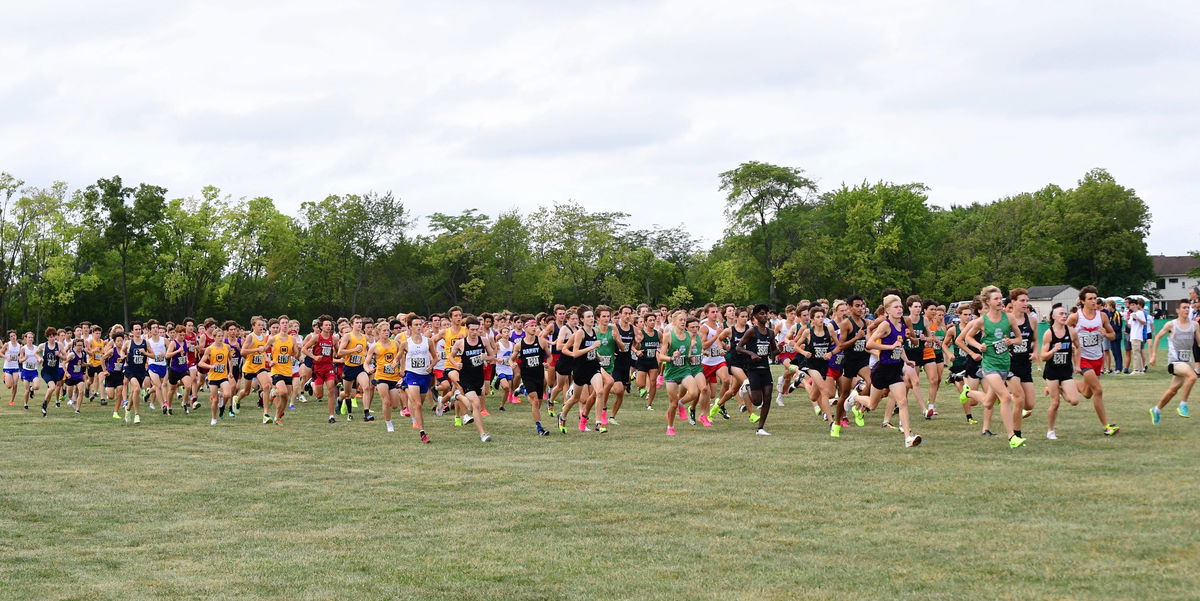
Imago
Syndication: The Enquirer Gentlemen are off and running in the boys varsity I race at the Mason Cross Country Invitational, Sept. 9, 2023. , EDITORIAL USE ONLY PUBLICATIONxINxGERxSUIxAUTxONLY Copyright: xGeoffxBlankenshipxforxThexEnquirerx 21385202

Imago
Syndication: The Enquirer Gentlemen are off and running in the boys varsity I race at the Mason Cross Country Invitational, Sept. 9, 2023. , EDITORIAL USE ONLY PUBLICATIONxINxGERxSUIxAUTxONLY Copyright: xGeoffxBlankenshipxforxThexEnquirerx 21385202
On a fog-choked day in Columbia, Missouri, the NCAA Cross Country Championships 10K unfolded as the nation’s finest collegiate runners stormed the course in a relentless chase for the title. The terrain tested every stride until the men’s 10K veered towards something unexpected. What was meant to be a smooth battle of endurance turned into a moment that left fans frozen in disbelief.
Watch What’s Trending Now!
So what exactly happened at the NCAA Cross Country Championships yesterday? During the race, which was broadcast on national television, some runners went beyond the white line that separates the track from the off-field area. But that wasn’t all. They also ran on the left side of the hay bales, an area clearly outside the designated course. This occurred multiple times throughout the race, first between the 3000m and 4000m mark, and then again between 7000m and 8000m.
These moments caught the attention of viewers, leaving many perplexed and questioning whether such actions should result in disqualification. In the 100m, 200m, and other short-distance races, lane infringement leads to immediate disqualification. However, in cross-country running, the rules are starkly different from those of indoor and outdoor track.
ADVERTISEMENT
As per Section 4, Article 21 of the NCAA Cross Country rulebook, “A competitor may run anywhere on the course at any pace or any change of pace as long as they do not use anybody or arm action to impede another runner’s progress.”
Multiple athletes running on the left side of the hay bales and white line.
This is between 7K and 8K. https://t.co/F8hDOrMSrO pic.twitter.com/DGnYIdvhhl
— Theo Kahler (@tckahler) November 22, 2025
The rulebook further flags impeding, unsafe cutting, veering, leaving and rejoining the course, forcing contact, or gaining an advantage by short-cutting as some of the grounds for disqualification. And the referee, upon receiving the report of a perceived rule violation from a competition official after review of the official meet video, if available, and consulting with the appropriate officials, can disqualify a competitor in such cases.
ADVERTISEMENT
One of the rules also states that if a runner “gains a meaningful advantage by failing to complete the prescribed course that is defined by a legal marking system,” that’s a running violation.
Thus, certain moments from the NCAA event yesterday left fans confused and only fueled the debate. So let’s take a look at what the fans have to say about it.
ADVERTISEMENT
Track and field enthusiasts raise their voices after the NCAA Cross Country Championships face a major lapse
One of the enthusiasts noted, “Your local 10K would DQ you for that.” His concern holds weight, as many club-level cross-country races operate under strict rules. For instance, the CMAC (Central Missouri Athletics Circuit) cross-country regulations clearly state, “Runners must stay within 5 feet of the course path (almost always a white line) as marked by race officials. … Cutting the course or taking shortcuts … is cause for disqualification.”
Another fan echoed the same frustration, asking, “How do you not flag this??? 😭 We had basically the entire course double-flagged for Club Cross last year.” Race Results Weekly founder David Monti also weighed in, calling the situation baffling: “This is ridiculous. Would all be DQ’d in a typical road race…” Indeed, in most standard road races, crossing the white line or cutting the course would almost certainly lead to disqualification.
ADVERTISEMENT
One frustrated observer dismissed it as “Most unserious sport.”
A long-time follower of cross country added, “I’ve never seen as much blatant and persistent course cutting as I’ve seen in the men’s NCAA XC race. Many running inside the hay bales on the turns for extended periods of time, including athletes on teams in the podium hunt.”
Finally, Furman Track and XC coach Rita Gary expressed her disbelief: “Men are straight up cutting the course on TV. Like blatantly??? This should be a DQ?!?”
ADVERTISEMENT
Habtom Samuel of the University of New Mexico claimed the individual title, while Oklahoma State emerged victorious in the team race. However, amid harsh criticism from fans and seasoned veterans alike, the possibility of disqualifications loomed large, turning what should have been a celebration into a flashpoint of controversy. What’s your take on this growing hubbub?
ADVERTISEMENT
ADVERTISEMENT
ADVERTISEMENT

